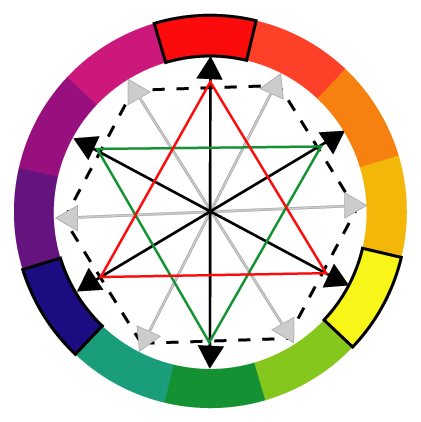
The black arrows represent a primary color and its complementary. The gray arrows represents two tertiary complementary colors.
| HOME |
Part 4 - Color Theory: Complementary Colors |
Webster's defines Complementary Colors as: 1 :
relating to or constituting one of a pair of contrasting colors that produce a
neutral color when combined in suitable proportions 3 : mutually
supplying each other's lack. Complementary colors represent, in essence, the
presence of all three primary colors in one form or another. Example: The complementary
color of red is green, and since green comes from yellow and blue, that
completes the primary color triangle.
In the color wheel, the arrows point to each respective complementary.

The black arrows represent a primary color and its complementary. The gray
arrows represents two tertiary complementary colors.